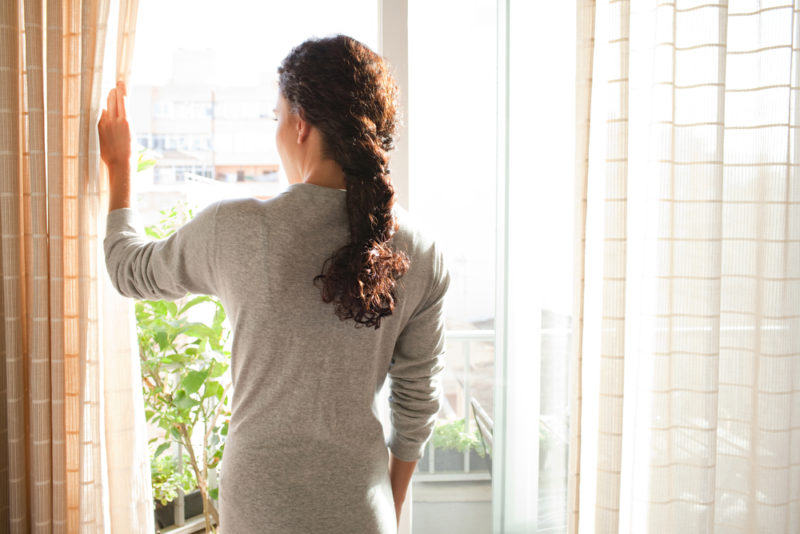Improve indoor air quality – The air inside or the air outside, which is cleaner? Although the air outside may seem polluted, it’ll shock you to know that in many cases, the air outside is cleaner than the air inside. Do you know that there are many toxins in what appears to be a healthy and clean home? As a matter of fact, the Environmental Protection Agency (EPA) stated that the air quality within homes and places of work can be more polluted than the air outside.
Some of the things that pollute the air inside your home include fibreboard furnishings, carpets, formaldehyde-infused synthetic floor coverings, clogged furnace filters, and even many household cleaning products. When you or your family members inhale those pollutants, it could potentially lead to respiratory illnesses such as COPD (Chronic Obstructive Pulmonary Disease) and Asthma. Additionally, they can also cause skin problems and exacerbate allergic reactions.
Thus, improving the air within your home is of great importance. That’s why you should continue reading because, in this guide, you’ll find 10 ways to improve indoor air quality.
See Also: 10 tips to Get Cigarette Smoke Smell out of the House Fast
In this article, we will explain the following;
- how to improve indoor air quality naturally
- how can you improve indoor air quality brainly
- how to improve indoor air quality in office
- how to reduce indoor air pollution
- improving the quality of air in the environment
- ways to improve air quality in cities
- how to improve air quality in room
- indoor air pollution
Ways to improve indoor air quality

1. Use air purifiers
One of the best ways to improve the quality of air in your home is through the use of air purifiers. Home air purification systems can filter out pollutants, odours, and toxic particles.
However, purchasing an air purifier for your home can be more difficult than it seems because there are tons of air purifiers in the market today makes the selection process a difficult one. Unlike other people, you won’t have to through the stress of searching for the best for your home because we have done the dirty work on your behalf.
Here are some of the best air purifiers you can get in the market today:
2. Change the air and house filters regularly
Another great yet easy way to improve the air quality in your home is by regularly cleaning and replacing air conditioners, furnaces, and other ventilation systems with whole house filters and well-fitting replacement air filters. Replacing your air filters is not only cheap but can also save you as much as 15% on electricity bills if replaced frequently.
3. Use indoor plants to improve the quality of your home
It has been discovered by NASA researchers that several plant varieties reduce indoor pollution. Spider plants and Boston Ivy have been known to take in carbon(IV)oxide and release clean and clear breathable air. Asides from improving the quality of air in your home, plants also add beauty to your indoor space.
Other plants capable of improving the quality of air within your home include:
- Aloe Vera
- Boston fern
- English ivy
- Bamboo palm
- Weeping fig
- Chinese evergreen
- Dragon tree
- Palm trees
- Peace lily
- Gerbera daisy
4. Ventilation
Nothing beats fresh air and it’s an important component for creating quality and healthy indoor air. You can start ventilating your home by opening the windows and doors—when you do that, the fresh air coming into your home replaces or refreshes the stagnant air inside the home.
See Also: 10 Ways to Get Rid Of Dog Smell in the House
5. Avoid smoking in the house
Smoking inside in house affects (harms) the quality of air within your house. Smoking cigarettes within the house is one of the most harmful pollutants to indoor air because the smoke from the cigarettes contains thousands of chemicals that can cause breathing problems, heart attacks, and cancer. Also, the smoke from cigarettes is extremely harmful to children. So if you feel the need to smoke rather than smoke indoors, take it outside.
6. Test and monitor radon levels
What’s radon? Radon is an odourless, colourless, and radioactive gas. The gas is produced from the naturally decaying uranium found within the soil. In the US, radon is the second leading cause of lung cancer and it can be found in virtually any home. Frequently testing for radon helps in ensuring that there ate no harmful gases or chemicals in the air.
7. Make use of natural cleaning products
A lot of household cleaners are dangerous as they can cause skin and respiratory problems. Aerosol sprays, ammonia, chlorine and other harsh cleaners can be absorbed into upholstery, drapes, and carpets in your home. So what’s the way out? Consider switching to natural cleaning products such as vinegar, baking soda, and lemon juice—they’ll clean your home just as well as artificial products without the added dangers that come with using artificial products.
8. Control the humidity in your house
Humidity is a term used to refer to the amount of water vapour present in the air. Humidity is capable of spawning mildew and mould which can trigger flare-ups in allergies and asthma. Hence, it’s recommended that you keep the humidity in your home between 30% and 50% as anything above 50% is considered as being too moist and anything below 30% is considered to be too dry.
9. Try using beeswax candles
Do you know that certain types of candles can affect the quality of air in your home negatively? Those candles release chemicals into your home when lit. Since it’s difficult to determine candles that contain harmful chemicals, a much safer option would be to use candles made from beeswax since they hardly release smoke when lit.
Beeswax candles provide a better environment for people suffering from respiratory problems like asthma. Additionally, beeswax candles can purify the air within your home by editing ions that can draw particles like dust and pollen into the candle.
10. Keep your furniture and floors clean
The air inside your home can carry different types of allergens in addition to the pet dander and dust mites that live in furniture, floors, carpets as well as sheets and bedding. You can make the air in your home purer by getting rid of the allergens when you regularly vacuum the floors and carpet (hardwoods are not excluded) and washing sheets.
Conclusion
Improving the quality of air in your home has a lot of benefits; for starters, it can prevent respiratory problems and it also improves the quality of life.
There are several ways to improve the quality of indoor air in any home but one of the best ways to do it is via the use of air purifiers like AROEVE Air Purifiers, LEVOIT Air Purifiers, HATHASPACE Smart Air Purifier.
You can save yourself and your family members from harmful toxins present in the air of your home by carrying out or practising the tips in this article.





